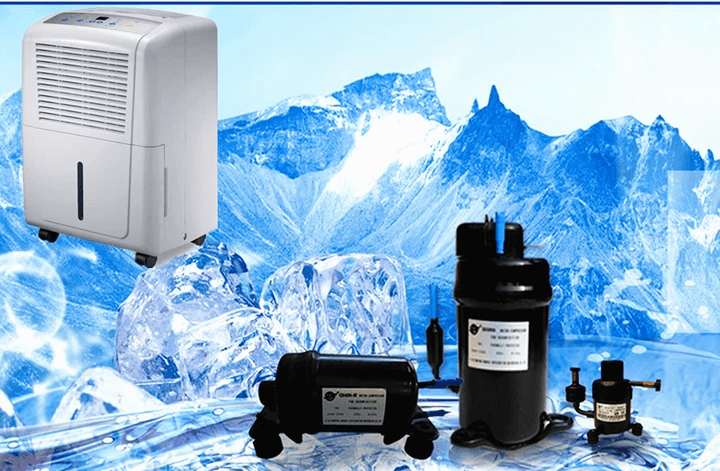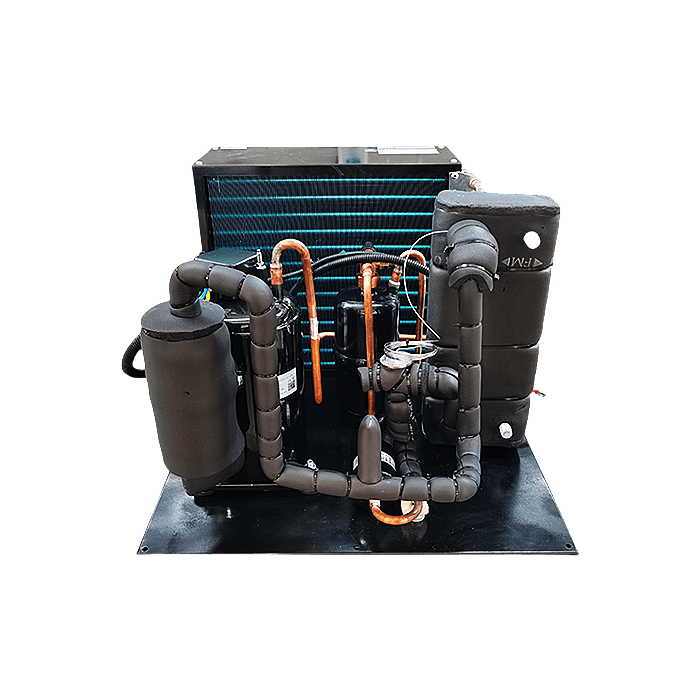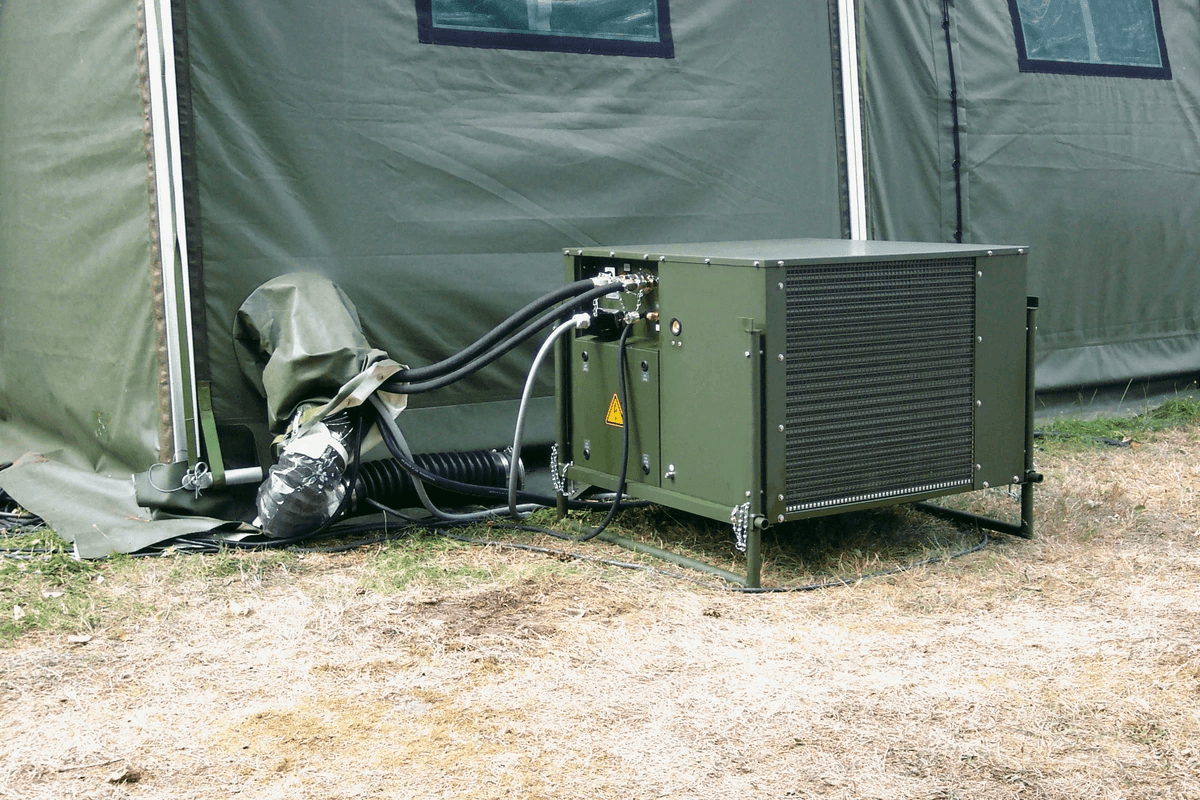Introduction

"RIGID is a miniature refrigerated compressor innovation leader in China. We keep looking for novel solutions in compact and portable cooling systems. We capture new technologies in mobile and compact cooling systems."
In the quest for efficient and sustainable heating solutions, the water source heat pump system emerges as a frontrunner. This innovative technology harnesses the natural thermal energy found in water bodies to provide both heating and cooling, making it an attractive alternative to traditional heat pump air conditioning units. As we delve deeper into this topic, we'll explore not only how these systems operate but also the myriad benefits they offer homeowners and businesses alike.
Understanding the Water Source Heat Pump System
At its core, a water source heat pump system utilizes the stable temperature of a water source—be it a lake, river, or even groundwater—to regulate indoor climates effectively. Unlike conventional air to air heat pumps that rely on fluctuating outdoor air temperatures, this system capitalizes on the relatively constant thermal properties of water. This unique approach allows for greater efficiency and reliability in both heating and cooling applications.
Benefits of Heat Pump Systems
The advantages of heat pumps and air conditioning systems are numerous, especially when considering energy savings and environmental impact. Water source heat pumps can significantly reduce energy consumption compared to traditional systems due to their ability to exchange heat with a more stable medium—water—rather than relying solely on ambient air temperatures. Additionally, these systems often lead to lower utility bills over time while contributing to a reduced carbon footprint.
How RIGID Innovates in Heating Solutions
RIGID is at the forefront of innovation in heating solutions with its cutting-edge designs and technologies tailored for water source systems. By integrating advanced compressors that enhance efficiency and performance, RIGID is redefining what consumers can expect from their pump for heating system installations. With an eye towards sustainability and user-friendly operation, RIGID is committed to providing solutions that not only meet but exceed modern heating demands.
The Basics of Water Source Heat Pumps

Water source heat pumps are an innovative solution for heating and cooling spaces efficiently. They utilize a body of water, such as a lake, pond, or well, as the primary heat exchange medium to transfer heat. This system is designed to provide both heating and cooling capabilities, making it a versatile choice for residential and commercial applications.
What is a Water Source Heat Pump System?
A water source heat pump system operates by harnessing the thermal energy stored in water bodies to regulate indoor temperatures. During winter months, the system extracts heat from the water and transfers it indoors for heating purposes. Conversely, in summer, it reverses this process by removing heat from the indoor air and dissipating it into the cooler water source—essentially making it a dual-purpose hero among heating solutions.
Comparison with Heat Pump Air Conditioning Units
When comparing a water source heat pump system to traditional air-to-air heat pump units, several distinctions emerge. While air-to-air systems rely on ambient air temperatures for their operation, water source systems can tap into relatively stable water temperatures year-round. This leads to greater efficiency and reliability in performance compared to typical heat pumps and air conditioning systems that may struggle during extreme weather conditions.
Key Components of a Heat Pump System
Understanding the key components of a heat pump system is crucial for grasping how they function effectively. Essential parts include the evaporator coil that absorbs heat from the water source, a compressor that circulates refrigerant through the system, and condenser coils that release absorbed warmth into your living space or expel it outdoors during cooling cycles. Together, these components work seamlessly to create an efficient heating solution that stands out from conventional options like air-to-air heat pumps.
The Efficiency of Heat Pumps

Energy Savings with Heat Pumps and Air Conditioning Systems
One of the standout features of a water source heat pump system is its ability to deliver energy savings that are hard to beat. Unlike conventional heat pump air conditioning units that rely on outside air temperatures, these systems take advantage of the relatively stable temperatures found in water sources. This results in lower operational costs, as heat pumps and air conditioning systems can operate more efficiently throughout the year, translating into noticeable savings on your utility bills.
Moreover, when comparing energy consumption between a heat pump system and traditional heating methods like electric resistance or gas furnaces, the difference is staggering. For instance, many users report saving up to 50% on their heating costs after switching to a water source heat pump system. So not only do you enjoy comfort during winter months; you also keep more money in your pocket!
Why Heat Pumps are Eco-Friendly
In an era where environmental consciousness is paramount, opting for a water source heat pump system aligns perfectly with green initiatives. These systems use renewable energy from nature—specifically from bodies of water—to provide heating and cooling solutions without burning fossil fuels or emitting harmful greenhouse gases. As such, they significantly reduce your carbon footprint compared to typical air-to-air heat pumps or other traditional HVAC systems.
Additionally, because they require less electricity than standard heating solutions, using a heat pump system contributes positively toward reducing overall electricity demand during peak times. This not only benefits individual households but also alleviates stress on local power grids—making it a win-win situation for everyone involved! Embracing eco-friendly technologies like these is essential for creating sustainable living environments.
Cost-Effectiveness of Water Source Systems
Cost-effectiveness is another compelling reason why homeowners should consider investing in a water source heat pump system over conventional options like an air-to-air heat pump or gas furnace. While the initial installation cost may be higher due to site-specific requirements and professional expertise needed for setup, the long-term savings make it worthwhile. With reduced energy consumption translating into lower monthly bills and potential tax incentives available for eco-friendly upgrades, this investment pays off over time.
Furthermore, maintenance costs tend to be lower with these systems because they generally have fewer moving parts than traditional HVAC units—all while providing reliable performance year after year! Investing in a quality unit means you can enjoy peace of mind knowing that your heating solution will stand the test of time without breaking the bank on repairs or replacements down the line.
How Does a Water Source Heat Pump Work?

Understanding the mechanics behind a water source heat pump system can be quite enlightening. At its core, this innovative system operates by transferring heat from one location to another, utilizing the natural thermal energy found in water sources such as lakes, rivers, or underground aquifers. By doing so, it provides both heating and cooling capabilities, making it an efficient alternative to traditional heat pumps and air conditioning systems.
Heat Pump How Does It Work Mechanism
So how does a water source heat pump work? The process begins with the evaporator coil absorbing heat from the surrounding water. This is where the magic happens: even cold water contains some level of thermal energy that can be harnessed. The refrigerant within the coil evaporates into gas, absorbing this heat before being compressed by a compressor—often a RIGID compressor for optimal efficiency—resulting in higher pressure and temperature.
Once compressed, the refrigerant gas moves to the condenser coil inside your home or building. Here’s where it releases its stored heat into your living space while condensing back into liquid form. The cycle then repeats itself as the refrigerant returns to the evaporator coil to absorb more heat from your chosen water source again. This continuous loop is what makes a water source heat pump system so effective at providing consistent heating or cooling.
Role of RIGID Compressors in Efficiency
RIGID compressors play a pivotal role in enhancing the efficiency of any heat pump system. These advanced compressors are designed specifically for optimal performance within various environmental conditions, allowing them to deliver maximum output with minimal energy consumption. When paired with a well-designed water source heat pump system, they ensure that every ounce of thermal energy is utilized effectively.
What sets RIGID compressors apart is their ability to adapt based on real-time demands of your heating and cooling needs. This means that whether you’re experiencing sweltering summer days or chilly winter nights, these compressors adjust accordingly without wasting precious energy resources like traditional units might do. In essence, if you want an effective pump for heating systems that saves on costs while delivering comfort year-round, look no further than those equipped with RIGID technology.
Understanding the Heat Transfer Process
Heat transfer is at the heart of how all heating and cooling systems operate—but it's particularly fascinating in a water source setup! As mentioned earlier, this process involves moving thermal energy from one medium (in this case, water) to another (your indoor environment). The efficiency of this transfer relies heavily on temperature differentials; warmer areas naturally flow towards cooler ones until balance is achieved.
In practical terms for homeowners considering either air-to-air or other types of systems: understanding how effectively your chosen method transfers warmth can lead directly to better comfort levels and reduced utility bills over time! By utilizing natural resources like groundwater instead of solely relying on electricity or fossil fuels—water source systems provide an eco-friendly solution without sacrificing performance quality when compared against traditional air conditioning units.
Installation Considerations

When it comes to installing a water source heat pump system, several factors deserve your attention. The right installation can make a world of difference in efficiency and performance. Let’s dive into the crucial aspects that will ensure your heat pump system operates at its best.
Choosing the Right Location for Your Pump for Heating System
Selecting the ideal location for your water source heat pump system is critical for optimal performance. Ideally, you want to place the unit in an area that provides easy access to water sources while also being protected from harsh weather conditions. Avoid spots near heavy foot traffic or areas prone to flooding; after all, no one wants their heat and cooling pump submerged in water!
Additionally, consider proximity to your home’s ductwork or distribution system to minimize energy loss during operation. A well-placed heat pump can enhance efficiency, reducing energy costs associated with heating and cooling systems. Remember, the right placement can lead to a more effective air-to-air heat pump setup that keeps you comfortable year-round.
Professional Installation vs. DIY
While some homeowners may be tempted to tackle the installation of a water source heat pump system themselves, it’s often best left to professionals. Proper installation requires specialized knowledge about plumbing and electrical systems—after all, this isn’t just any run-of-the-mill home improvement project! An experienced technician will ensure that everything is set up correctly and efficiently, maximizing the lifespan of your heat pumps and air conditioning systems.
On the flip side, if you’re handy and have experience with similar projects, DIY might save you some cash upfront. Just remember: cutting corners could lead to costly repairs down the line if something goes awry during installation! Weighing these options carefully can help you make an informed decision about whether to hire a pro or roll up your sleeves.
Common Installation Mistakes to Avoid
Even seasoned installers can make mistakes when setting up a water source heat pump system; however, awareness is key! One common blunder is neglecting proper insulation around ducts or pipes—this oversight can significantly reduce efficiency and increase energy bills over time. Another pitfall is failing to account for local building codes or regulations; nothing spoils a good heating solution like fines from inspectors!
Moreover, not considering future maintenance access during installation can lead to headaches later on when it's time for service checks on your heat and cooling pump. Ensure there’s enough space around your unit so technicians can easily perform routine maintenance without hassle! By avoiding these common mistakes, you’ll be well on your way toward enjoying an efficient heating experience.
Maintenance Tips for Longevity

Maintaining your water source heat pump system is crucial for ensuring its longevity and efficiency. Regular upkeep not only prolongs the lifespan of your heating and cooling pump but also maximizes energy savings, making it a win-win situation. By following a few simple maintenance tips, you can keep your system running smoothly and efficiently.
Regular Maintenance for Heat and Cooling Pumps
Just like any other appliance in your home, a water source heat pump system requires regular maintenance to function optimally. Schedule annual professional inspections to ensure that all components are working properly; this includes checking refrigerant levels, inspecting electrical connections, and cleaning coils. Additionally, don’t forget about the air filters—changing or cleaning them every few months will improve airflow and efficiency in comparison to traditional heat pumps and air conditioning systems.
Regular maintenance helps identify potential issues before they escalate into costly repairs. If you're using an air-to-air heat pump or any other type of heat pump system, keeping it clean will enhance its performance significantly. Remember, a well-maintained unit not only saves you money but also provides peace of mind during extreme weather conditions.
Signs Your Heat Pump Needs Service
Knowing when your water source heat pump system needs service can save you from unexpected breakdowns during peak usage times. Pay attention to unusual noises such as grinding or squealing sounds; these could indicate mechanical issues that require immediate attention. Additionally, if you notice fluctuating temperatures or rising energy bills without any changes in usage patterns, it might be time to call in a professional.
Another telltale sign that your heating and cooling pump needs servicing is if it's short-cycling—turning on and off frequently instead of running continuously during heating or cooling cycles. This can strain the unit's components over time, leading to more severe problems down the line if not addressed promptly. Catching these signs early on can help maintain the efficiency of your heat pumps and air conditioning systems while saving you from costly repairs.
DIY Maintenance Tasks for Homeowners
For those who enjoy getting their hands dirty, there are several DIY maintenance tasks that homeowners can perform on their water source heat pump systems to extend their lifespan effectively. Start by regularly cleaning around the outdoor unit; removing debris such as leaves or dirt ensures proper airflow around the compressor coils—this is especially crucial for an efficient heat pump how does it work?
You can also check insulation on pipes leading to your heating system; make sure there are no visible cracks or gaps where energy could escape. Lastly, consider flushing out the condensate drain line periodically to prevent clogs that could lead to water damage in your home—keeping everything flowing smoothly is essential for optimal performance!
Conclusion
In wrapping up our exploration of the water source heat pump system, it's clear that these systems offer remarkable advantages for both heating and cooling needs. With their energy-efficient designs, they stand out when compared to traditional heat pump air conditioning units. As we look forward, the evolution of heat pumps and air conditioning systems promises even greater efficiency and sustainability.
Key Advantages of Water Source Heating
The water source heat pump system boasts several key advantages that make it an attractive option for homeowners and businesses alike. First off, its ability to harness renewable energy from water sources leads to significant energy savings over time—something that traditional air to air heat pumps can't always match. Additionally, the versatility in installation locations allows for greater flexibility in integrating this pump for heating system into various environments.
Moreover, these systems are known for their reliability and longevity, requiring less maintenance than many conventional heating options. When considering cost-effectiveness, a well-installed water source heat pump can pay for itself through reduced utility bills and lower environmental impact. Ultimately, the combination of efficiency and eco-friendliness positions water source heating as a smart choice for the future.
The Future of Heat Pump Technology
As we peer into the future of heat pump technology, it's evident that innovation is on the horizon—especially concerning the development of more efficient heat pumps and air conditioning systems. Advances in materials science and engineering are paving the way for even more effective compressors and heat transfer processes within these systems. The integration of smart technology will also enhance user experience by allowing homeowners to monitor their energy consumption in real-time.
Furthermore, with increasing awareness about climate change, there is a growing demand for eco-friendly solutions like water source heat pumps that utilize natural resources efficiently. This trend indicates a shift towards sustainable practices within both residential and commercial sectors—making it an exciting time to invest in such technologies. As manufacturers like RIGID continue pushing boundaries, we can expect transformative changes that could redefine how we think about heating solutions.
Final Thoughts on Efficient Heating Solutions
In conclusion, embracing a water source heat pump system not only addresses immediate heating needs but also contributes positively to our environment by reducing carbon footprints associated with traditional methods. The benefits extend beyond mere cost savings; they encompass reliability, efficiency, and sustainability—all crucial elements in today’s world where climate consciousness is paramount.
So whether you're considering upgrading your current setup or exploring new options entirely, investing in a quality heat pump system could be one of your best decisions yet! With ongoing advancements in technology ensuring better performance year after year, now is truly the perfect time to jump on board this green revolution.